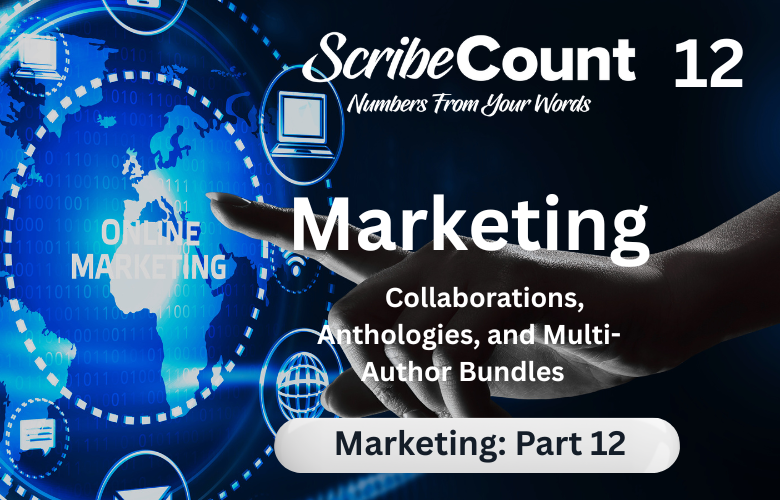Collaborations, Anthologies, and Multi-Author Bundles for Indie Authors
In the world of independent publishing, collaboration has become one of the most effective ways to grow an audience, cross-pollinate readerships, and achieve sales goals that would be difficult to reach alone. Whether it’s a themed anthology, a promotional box set, or a multi-author bundle centered around a genre or series hook, these cooperative projects give indie authors the chance to share marketing responsibilities, pool resources, and amplify exposure across platforms. At their best, collaborations become more than temporary partnerships—they create long-lasting career boosts and strong author networks.
This guide explores what these joint projects are, how they’re structured, what’s required to create and manage them, and how authors leverage them as part of a broader marketing strategy. We’ll also look at royalty management, ISBN and metadata control, distribution tactics, and how tools like BookFunnel make technical coordination possible. Whether you’re planning your first group promo or taking on the publisher role for an anthology, this comprehensive overview will help you succeed.
Understanding the Formats: Collaboration, Anthology, and Bundle
At their core, these formats are all rooted in shared publishing efforts, but they differ in structure and purpose. A collaboration typically refers to any joint marketing or publishing project between two or more authors. This can be informal—such as cross-promoting newsletters—or formal, as in shared releases or revenue splits.
Anthologies are collections of stories or novellas from different authors compiled into a single volume. They may center around a theme, genre, or shared universe. These are published as standalone products and often marketed under a single brand or publisher.
Multi-author bundles refer to a collection of full-length novels or boxed sets packaged for value pricing, usually with the goal of hitting a bestseller list or expanding reach. These can be temporary promotions or permanent listings on platforms like Amazon, Apple Books, Kobo, and Barnes & Noble.
Each format serves a slightly different audience need—discovery, value, engagement—but all thrive on the same core mechanics: cooperation, alignment of goals, and shared effort.
Why Indie Authors Use Collaborations
Collaborative projects allow authors to benefit from shared audiences. Each author brings their mailing list, followers, genre niche, and platform presence. This magnifies reach exponentially—especially during launch windows or sales pushes. Anthologies introduce readers to new voices in a trusted context, while bundles provide excellent value for fans and irresistible price incentives for newcomers.
Beyond reader expansion, collaborations distribute the workload. From cover design and editing to marketing strategy, these projects succeed when duties are clearly delegated. The resulting exposure often justifies the effort, especially for newer authors looking to gain reviews, newsletter subscribers, and platform visibility.
How to Create and Organize a Collaboration
Most projects begin with a core concept—holiday romance anthology, first-in-series bundle, genre-specific thrillers—and a lead organizer. That organizer functions as the project manager or publisher. Their duties include setting deadlines, choosing contributors, managing documents and files, securing a designer, coordinating editors, formatting the final product, uploading files, and organizing promotions.
Clear contracts or agreements are essential. Whether you’re publishing on your own KDP account or through a shared legal entity, contributors must understand the terms: what they’re contributing, what they get in return, how royalties are handled, and what marketing commitments are expected.
Groups often use tools like Google Drive, Trello, Slack, or Airtable for project management. Distribution of advance reader copies, newsletters, and sales files is typically handled via BookFunnel, which simplifies file delivery and ensures professional presentation.
Using Offers, Coupons, and Links in Multi-Author Projects
Collaborative projects become even more powerful when they include limited-time offers, exclusive content, or coupons. For instance, an anthology may include a link at the end of each story offering a free novella in exchange for a newsletter signup. Bundles may include a call-to-action for discounted backlist titles.
Platforms like Payhip or Gumroad can host these sales, while BookFunnel enables free downloads or audio giveaways tied to email capture. Each author can contribute a bonus incentive or offer to drive traffic back to their own platforms.
Where Collaborations Work Best
Bundles and anthologies perform well on all major sales platforms—Amazon KDP, Kobo Writing Life, Apple Books, and Barnes & Noble Press. Series starters and themed collections often gain traction through BookBub, Written Word Media, and newsletter swaps that widen exposure.
Authors also benefit from using video trailers, teasers on TikTok or Instagram Reels, guest posts, and cross-promotions tied to the release. Embedding links, offering short-term price drops, and timing launches around holiday or event schedules can boost success.
Royalties, Revenue Splitting, and Publisher Roles
Revenue splitting must be handled transparently and accurately. If one author is publishing the project, tools like Draft2Digital’s royalty splitting or PublishDrive’s collaborative payment system help automate this process. Alternatively, income can be paid manually via PayPal or Wise, tracked in shared spreadsheets.
The publisher (often the organizer) is responsible for uploading files, tracking sales, reporting results, distributing payments, and managing taxes or reporting requirements. ISBN ownership usually rests with the publisher, who also controls metadata and pricing. Authors should clarify in writing whether they can republish or reuse their content later.
Metadata, ISBNs, and Legal Rights
Metadata—including keywords, categories, descriptions, contributor names, and series designations—must be chosen carefully. Anthologies and bundles should use terms that match reader search behavior and highlight cross-author discoverability.
An ISBN is required if publishing wide and not through Amazon exclusively. ISBNs identify the publisher and determine retail reporting. The publishing author or entity should secure and register the ISBN under their name, even for digital-only projects.
Ownership of stories should remain with the original author unless otherwise agreed. Anthologies may offer exclusive rights for a limited time (e.g., 90 or 180 days), after which authors can repackage or resell their contributions individually.
Sales Reporting, Pricing, and Platform Strategy
Bundles priced under $4.99 perform well in high-volume markets. Anthologies can often be priced between $0.99 and $2.99 to maximize promo eligibility and draw attention. On Apple and Kobo, longer boxed sets and regional promotions may perform particularly well.
Sales reporting is usually handled manually by the publisher unless using a platform that automates it. Using shared dashboards, regular updates, and monthly payouts builds trust. ScribeCount can assist with tracking and aggregating sales across platforms.
Advertising and Each Author’s Contribution
Each contributor is expected to share launch posts, contribute newsletter mentions, post to social media, and possibly participate in paid ad campaigns. Some groups divide the ad budget evenly, while others ask each author to handle ads within their own channel.
The most successful collaborations include pre-launch buzz, coordinated social content, visual branding, and clear expectations about ongoing promotion. Using a shared calendar, media kit, and weekly reminders helps maintain consistency.
Examples of Successful Projects
Romance anthologies like Christmas Kisses or thriller bundles like Deadly Dozen have used multi-author strategies to hit bestseller lists, build mailing lists, and grow brand awareness. These collaborations succeed by balancing contributor quality, strong covers, smart pricing, and an organized execution timeline.
Final Thoughts: Collaboration as a Career Strategy
Anthologies and bundles aren’t just one-off promotions—they can anchor your marketing and broaden your career. Authors who regularly participate in or lead collaborations build deeper relationships in the indie world, expand their reader base, and sharpen their publishing and promotion skills.
By aligning on goals, communicating transparently, and using the right tools, collaborations can transform individual effort into collective momentum. Whether you’re building your platform or pushing a major launch, joint projects offer some of the highest leverage opportunities in indie publishing.

